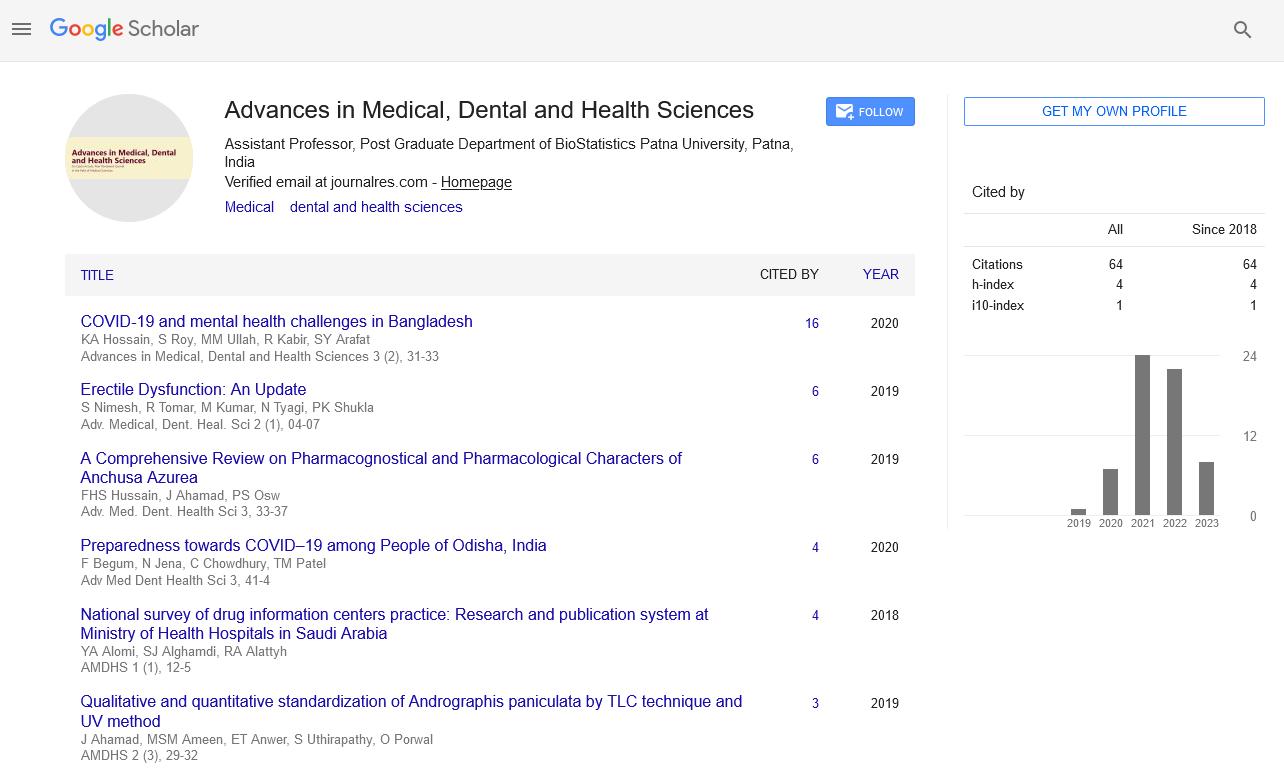Anterior Segment Disorders and Dry Eye Injuries, Allergens, Inflammation, Dry Eye, Corneal Disorders, Cataract and Presbyopia Can Affect the Eye's Ability to Focus
Abstract
Author(s): Ahmadull Bari* and AK Al-Miraj
Background and objectives: Dry Eye is a common condition that is often under diagnosed. Normal vision requires moist healthy ocular surface. A sufficient quality of tears, normal composition of tears film, lid closure to maintain healthy ocular surface. Dry eye is a disorder characterised by either quantitative decrease or qualitative change in pre-corneal film resulting in spectrum. Along with assessment of dry eye with OSDI questionnaire and various tests were done to grade dry eye.
Methods: A prospective study was conducted to assess the dry eye in July 2021 to August 2022 in BSM Medical University Dhaka and Dishari Eye Hospital Chattogram, Bangladesh. Total 63 cases were chosen from the outpatient department of and assessment of dry eye was made by tests like Schirmer’s test, Tear breakup time, Rose Bengal dye test. Ocular Surface Disease Index (OSDI) questionnaire was given to patients to assess the grading of dry eye.
Results: Majority 31.7% patients were in the group 41 years to 50 years. In the study OSDI questionnaire had a good reliability and consistency (p< 0.001) highly significant. Pearson correlation with r value among various test like Rose Bengal test, Schirmer’s test and TBUT showed a good correlation.
Conclusion: Dry eye is a chronic disease and increase in incidence of dry eye increases with age. Various risk factors should be assessed to find the cause of dry eye. Subjective test like Odi questionnaire with objective tests like rose Bengal, Schirmer’s and Tear breakup time should be done routinely to assess the grading of dry eye so that long term complications associated can be prevented.
